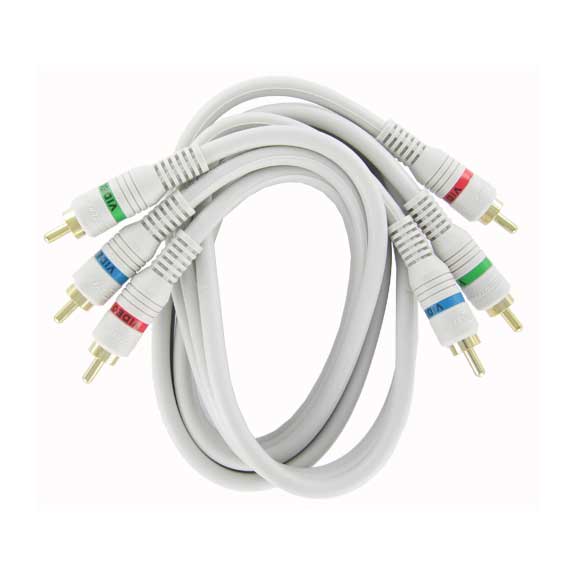

With more and more people switching over to high definition channels, it is important to know whether your television, cable box, and other entertainment system is able to support high definition. The standards have been HDMI and component cables to carry the HD signals over to the television. For this topic, we’ll discuss what component cables are as well as their benefits and disadvantages.
Though high in quality and suitability, it cannot be easily made to support strong digital signals. Another disadvantage is that it can only carry video signals. With multiple channels (up to 5 cables), it creates more clutter and requires you to have a separate cable just for audio.
Component cables, or RGB, are analog signals compared to their counter parts DVI and HDMI which are digital signals. Analog cables are also very robust and can go up to 200ft without any signal quality issues. However, to make sure you do not get ghosting or ringing the cables must be ideally 75Ω. Component cables are able to carry signals of 480i, 480p, 576i, 576p, 720p, and 1080p. Component cables, however, have been widely used for commercial, professional, and high-end installations.
Some assumptions have been made that ‘digital is always better’. This is not necessarily true. Much of the DVI and HDMI signals are twisted-pair cables which loses the impedance. Digital cables also face a ‘digital cliff’ in which if the cable is too long it becomes harder to reconstruct the bits being carried and could lead to a permanent loss in data. Loss of bits in the bit stream can result in a pixilation on your display making an unclear image.
So is RGB the choice for you? The answer is, “it depends”. Every situation is different and may require some technical support in order to verify the correct solution. But before calling tech support, make sure you list out what cables your monitors can handle as well the distance of the source to the display. You can view SF Cable’s detailed list of component cables here. If you have any questions, please reply to the post or click the live on-line tech support at the SFCable main page.